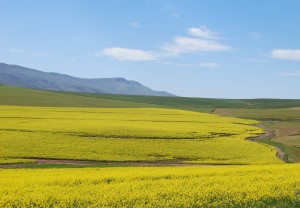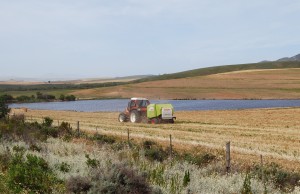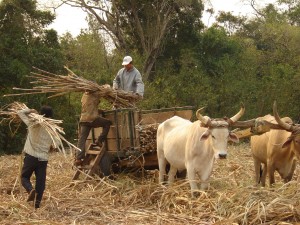CHAPTER < TWELVE - FINDING SUSTAINABLE SOLUTIONS
“In many ways we remain ecological illiterates. Nevertheless there is enough knowledge to cure almost any ecological disease; it needs only to be applied.” Conservationist and biologist Dr George B. Schaller
 Finding sustainable solutions to the pressing problems of global hunger, thirst and energy requirements will occupy the time and intelligence of tomorrow’s leaders in a race against essential resource impoverishment.
Finding sustainable solutions to the pressing problems of global hunger, thirst and energy requirements will occupy the time and intelligence of tomorrow’s leaders in a race against essential resource impoverishment.
However this is not just a challenge of the future. With the world’s population having hugely increased over the decades of the second half of the 20th Century; the demand for food also proportionately increased, putting enormous pressure on the world’s farmers, as well as the carrying capacities of important food-producing croplands, rangelands and the sea.
The short-term solution to this problem came in the form of the Green Revolution, which at first seemed to be a miracle of human ingenuity and endeavour. Through major advances in the agricultural technologies of breeding, fertilising, irrigating and mechanising, farmers were able to increase food production significantly. For a while the amount of food produced outpaced the demand. This was an important step forward in the direction of providing food for the world’s hungry people. However all was not as it seemed. In time it became apparent that the gains in yields were being offset by important losses. Farmers had come up against the law of diminishing returns.
For every bushel of wheat produced in the United States, 1000 times more energy was required than that needed for the production of the same amount of wheat in India, using traditional farming methods.
 Mechanised ploughing, which sliced and broke up clods of earth, destroying the structural integrity of the soil, was used extensively; with the result that precious topsoil was lost at an alarming rate from the farming lands of some of the world’s most productive areas.
Mechanised ploughing, which sliced and broke up clods of earth, destroying the structural integrity of the soil, was used extensively; with the result that precious topsoil was lost at an alarming rate from the farming lands of some of the world’s most productive areas.
Green Revolution methods in developed and developing countries also required a substantial increase in the use of synthetic, petrochemical-based fertilisers, use of which, over time, made the soil more compact causing it to harden and dry out, and eventually erode. It also depleted the soil, exhausting its natural growing capabilities. Wasteful irrigation methods resulted in the evaporation of water from Green Revolution fields, causing salts to build up in the soil, which further diminished its fertility. And technology-driven farming techniques that required expensive machinery to sustain high production quotas, meant that farming had become cost intensive in many parts of the world and a livelihood for the rich, which effectively precluded the poor.
During the Economic Era, with the advances made possible by the Green Revolution, farmers had gone forward with many progressive new developments. These innovations were important in light of the climatic, agricultural and sociological problems that the world was facing at the time: problems such as increased average temperatures, altered wind patterns, changed patterns of humidity and rainfall, increased levels of air pollution, decreased access to water, overgrazed farmland, diminished land availability for cultivation, reduced soil fertility, increased resistance of insects and other pests to herbicides, insecticides and pesticides, an increased wind and water erosion problem and ever-escalating numbers of people to feed. In essence, by putting all their faith in modern technology, farmers in the developed world and parts of the developing world had moved away from the ancient wisdom of the land, and had literally reaped what they had sown.
A Greener Revolution
With the ecological problems of the latter part of the last century becoming more severe and the overall success of the Green Revolution declining, something had to change. Another approach had to be found. Luckily one was right around the corner. With the shortcomings of the intensely-technologically driven Green Revolution having become apparent, as well as the timely emergence of a completely different philosophy characterised by the Environmental Era, an increasing number of farmers decided to get back to the basics of farming.
Since then organic farming has come full circle and the results of its re-emergence in the mindsets and fields of modern-day farmers and consumers have been astounding. By re-employing many of the old, traditional farming methods: methods that give greater precedence to nature, knowledge of the past has been synthesized with technological advances of the present. And in the process many ecological wrongs have been righted and new solutions have been found for 21st Century agricultural and environmental problems.
For example, by combining both ancient and modern agricultural practices, soil erosion, which was once a major problem for farmers, has been virtually eliminated in many important food-producing regions of the world by the practice of “no-tillage”, whereby a cover crop is planted between the rows of the main crop.
 Drip irrigation, another combination of ancient and modern farming technology, is being employed by many of today’s farsighted farmers as a way of conserving water; ensuring that the water that is used to irrigate crops is utilised in a more economical way, thereby preventing evaporation and wastage.
Drip irrigation, another combination of ancient and modern farming technology, is being employed by many of today’s farsighted farmers as a way of conserving water; ensuring that the water that is used to irrigate crops is utilised in a more economical way, thereby preventing evaporation and wastage.
In this way, by employing simple lengths of perforated pipes hooked to pumps, considerable amounts of water are being saved every day, which is vitally important in the water-strapped world of the present and future, as agriculture uses the highest percentage of available freshwater. Drip-irrigation has also meant that reliance on giant hydroelectric dams, remnants of a water-wasteful past, has been reduced.
Staggered planting with harvests and fields being rotated, which takes into account natural growing cycles, is helping to prevent soil exhaustion and erosion. With the planting of crops such as velvet beans, lost nitrogen once supplemented by inorganic fertilisers, is being replaced, replenishing by natural means the nitrogen requirements of soil in an increasing number of food-producing fields around the world.
 Heavy machinery which damages the soil has been replaced in many areas by animal power which is cheaper, doesn’t break down requiring expensive and often difficult-to-obtain spare parts, doesn’t compact the soil and is able to work in uneven terrain.
Heavy machinery which damages the soil has been replaced in many areas by animal power which is cheaper, doesn’t break down requiring expensive and often difficult-to-obtain spare parts, doesn’t compact the soil and is able to work in uneven terrain.
And the soil’s need for careful management and enriching has also gone back to nature with the use of terracing, taking pains to minimise the disturbance of adjoining natural areas, and feeding with farmyard manure and compost, which in turn means that organic matter is recycled, thereby retaining important nutrients in the agricultural system.
The knowledge for this resurgence of organic farming was there all the time, it just needed to be brought forward into present-day consciousness and then acted upon in simple and practical ways by first- and third-world farmers. However even with an intelligent combination of Green Revolution technology and traditional farming methods, 21st Century agricultural needs have required and received a further quantum leap of innovation.
Feeding the World
The challenge of finding sustainable agricultural practices for farmers all over the world is one of the most important and pressing challenges facing us in the future, because the need to provide food for hungry people is growing proportionately with each new baby born. Another important consideration in the hunger equation is that hungry people are angry people. Conflict has erupted over less than a plateful of food with which to satisfy an empty belly and serious food shortages have the potential to further destabilise an already unstable global situation. Will the increasing demands of the world’s hungry people be enough of an incentive to spur further agricultural innovation? It has in the past so it seems axiomatic that it will do so again in the future.
With regard to the technological innovations that have already been and are currently being developed, it is possible that there is light at the end of the future agricultural tunnel and that the current imbalance between food and people will be redressed in time. For once again human ingenuity has risen to an enormous challenge with a shopping-basketful of food solutions of dazzling inventiveness.
 Biotechnology has produced varieties of crops that are more resistant to disease and insect pests; more interesting in terms of colour, shape and form; more resilient when being shipped or stored; more drought-resistant; more nutritious; more salt-tolerant and more able to produce higher yields per acreage.
Biotechnology has produced varieties of crops that are more resistant to disease and insect pests; more interesting in terms of colour, shape and form; more resilient when being shipped or stored; more drought-resistant; more nutritious; more salt-tolerant and more able to produce higher yields per acreage.
One such breakthrough is a new wheat strain, which has increased production of wheat in Mexico tenfold, turning Mexico into a wheat exporter rather than an importer, which it previously was. And a new strain of “super rice” which requires less water and fertiliser has provided 25 per cent higher yields than other traditional strains; both developments being important breakthroughs due to the fact that at present wheat and rice are part of the vitally important triumvirate of just three plants; rice, wheat and corn, which provide one half of all human energy requirements worldwide.
In terms of land usage, researchers are experimenting with plants that can grow in high-saline seashore and coastal deserts, as well as hot arid areas where previously they could not, extending valuable plant-growing ranges. They are also experimenting with the possibilities of seawater irrigation for salt-resistant crops such as eggplant, as well as the use of crops such as jojoba to stabilise soil in desert regions.
Hydroponics, a means of cultivation whereby plants are grown in water containing an appropriate mix of nutrients, is also receiving its fair share of research attention; as is the cultivation of strains of micro-organisms such as spirulina, cyanobacterium, which has a higher protein content than soybeans. All this has been made possible through extensive laboratory research as well as the practice of genetic engineering, whereby genetic material is recombined into variations that are more desirable in terms of human requirements, although the jury is still out on this point.
From a non-scientific point of view, progressive farmers are also experimenting with, and receiving, good results from “New Age” agricultural practices such as planting when the moon is full, playing taped music over loudspeakers to increase “growing frequencies”, growing plants in pyramid structures to enhance energy fields and increase growth, as well as reverting to original, open-pollinated, resproutable seeds, instead of relying on commercially produced hybrid seeds.
 But human ingenuity in the face of food shortages does not begin and end with husbandry of the land. Aquaculture, whereby aquatic species such as tilapia, trout, salmon, shrimp, catfish, crayfish, oysters, prawns and shellfish are bred, raised, farmed and processed in commercial ponds, is gaining favour in many parts of the world becoming an important international food producing industry, although instead of helping to take the pressure off marine fish stocks as was originally intended, it is contributing to the problem because of the proportion of wild fish stocks needed to provide feed for farmed fish. Even sea horses are being commercially farmed to produce food condiments, a further example of human ability to adapt what is available to what is needed…
But human ingenuity in the face of food shortages does not begin and end with husbandry of the land. Aquaculture, whereby aquatic species such as tilapia, trout, salmon, shrimp, catfish, crayfish, oysters, prawns and shellfish are bred, raised, farmed and processed in commercial ponds, is gaining favour in many parts of the world becoming an important international food producing industry, although instead of helping to take the pressure off marine fish stocks as was originally intended, it is contributing to the problem because of the proportion of wild fish stocks needed to provide feed for farmed fish. Even sea horses are being commercially farmed to produce food condiments, a further example of human ability to adapt what is available to what is needed…